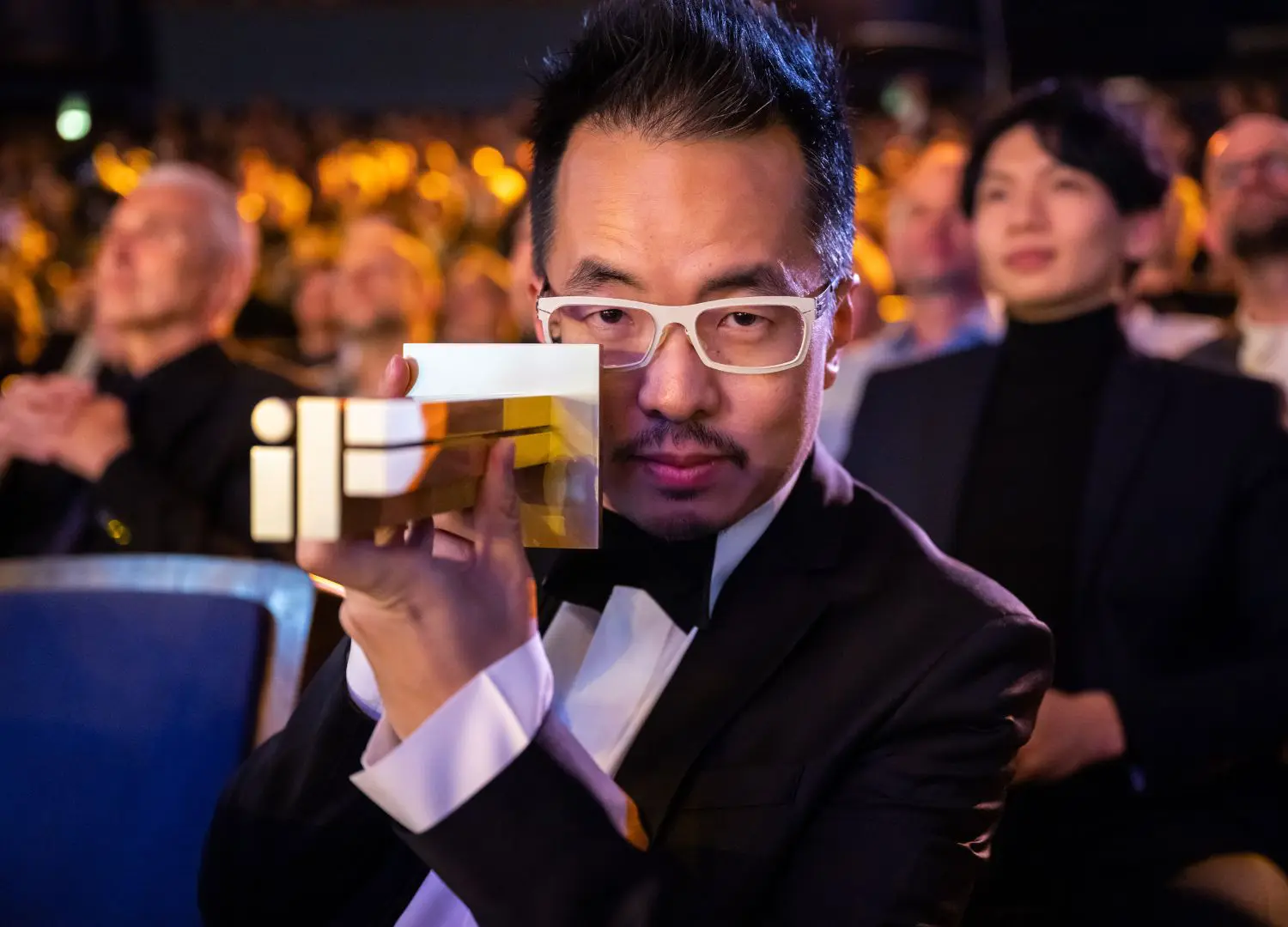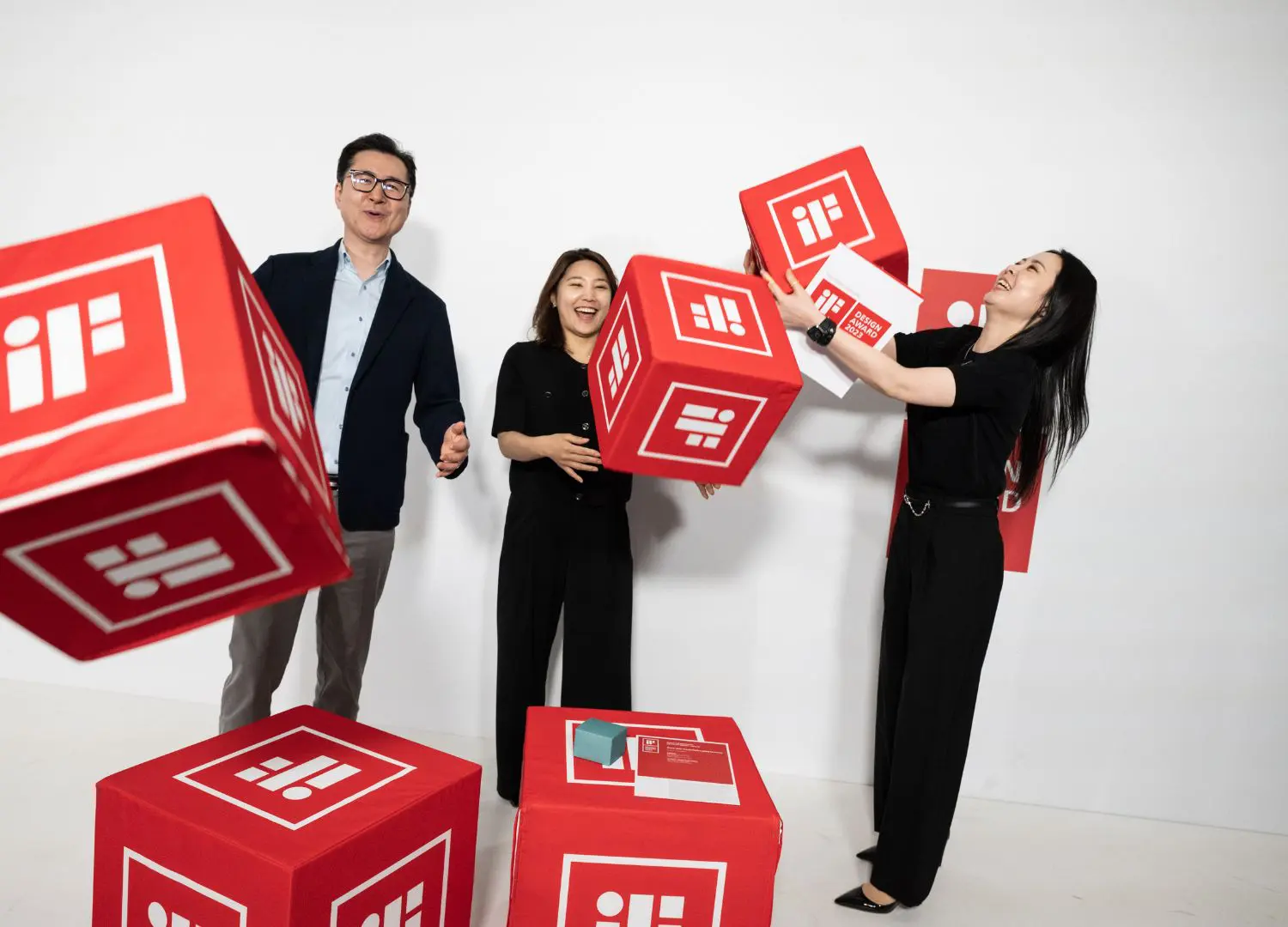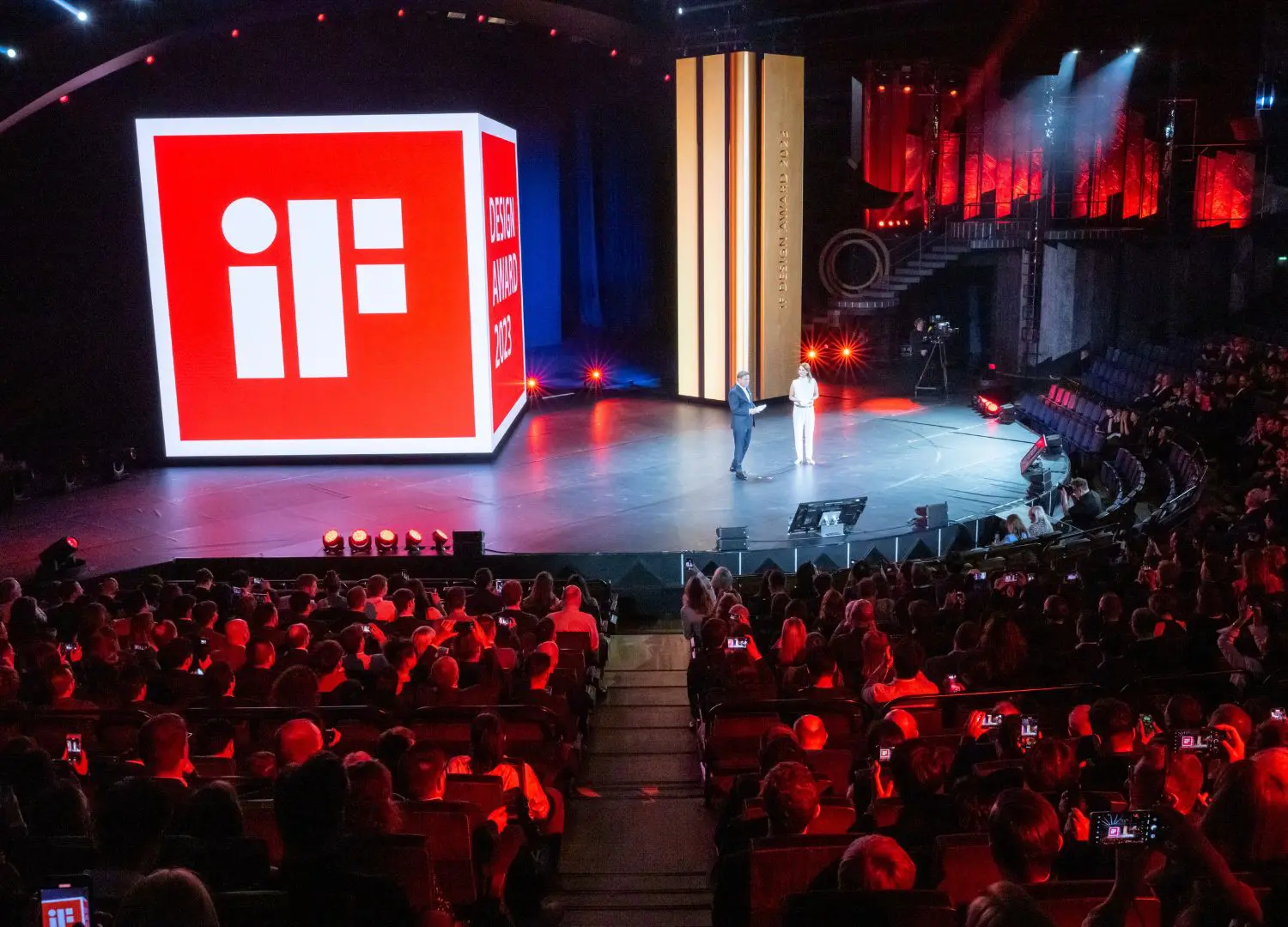The role and responsibilities of a design award – interview with Uwe Cremering
In this conversation with the CEO of iF Design, we explored the transformative power of awards in validating design excellence, fostering innovation, and driving industry advancements

The 2023 iF Design Award ceremony recently took place at the breathtaking Friedrichstadt-Palast theatre in Berlin, and we had the privilege of attending as media representatives.
It was an opportunity to discover the 75 winning projects of the iF Gold Award, selected from nearly 11,000 entries from 56 countries. These projects were evaluated by a jury of 132 international experts representing over 20 countries worldwide.
During the event, I had the chance to have a conversation with Uwe Cremering, CEO of iF Design, where I asked him to provide further insights into how the award functions and his perspective on the evolving design landscape, particularly regarding the impact of new technologies on the work of designers and the future role of the award.

Our discussion yielded valuable insights that shed light on the compelling reasons why companies and designers should consider participating in the iF Design Award. Beyond being a momentary celebration, the award serves as a true validation of exceptional design projects, subject to the discerning judgment of the esteemed panel of judges. It brings not only a sense of pride, but also a deeper comprehension of the driving forces within the industry.
Following, the responses gathered from Uwe Cremering. Enjoy reading!
What is the key distinguishing factor of the iF Design Award, if you were to highlight just one or two main aspects?
Uwe Cremering:
“I can definitly highlight some key aspects that make the iF Design Award distinctive and special. Firstly, we take pride in having a highly neutral jury. Ensuring the quality and impartiality of our jury members is of utmost importance to us. That’s why we make it a point to change around 25 to 30% of the jury members during each session, maintaining a balanced and unbiased approach.
Secondly, we strive for gender balance and international representation. We were successful in achieving gender balance last year, and we continue to work towards greater diversity, including drawing more participants from Africa. We believe that a truly international and cross-qualified jury contributes to the credibility and integrity of our awards.
Another significant aspect is our 70-year history. Over this time, we have built strong relationships with numerous clients who have participated in the iF Design Award for decades. This longstanding tradition makes us immensely proud and speaks to the trust and respect we have earned in the industry.

Lastly, an organizational aspect that sets us apart is the fact that our only stakeholder is the iF Design Foundation. This unique structure allows us to reinvest funds within the system, supporting initiatives such as design student scholarships and social impact projects. We allocate 100,000 Euros annually for the social impact prize, demonstrating our commitment to making a positive difference while ensuring the sustainability of our resources. These are the key points that make the if Design Award stand out in the industry.”
The jury holds significant importance for the iF Design Award. Can you provide insights into the selection process and the measures taken to ensure both neutrality and the high level of expertise you mentioned?
Uwe Cremering:
“We have three methods in place to select our jury members. Firstly, we rely on recommendations from our existing jurors. When they come across talented individuals, they suggest them as potential jurors. We then reach out to these individuals, conduct interviews, and assess their suitability for the iF Design Award jury.
Secondly, we keep a close eye on industry magazines and publications. If we notice certain names repeatedly mentioned and associated with notable achievements, we proactively reach out to them to gauge their interest in joining our jury. Being a part of the iF Design Award jury is not only prestigious but also beneficial for their professional growth, especially for young jurors.
Lastly, we receive numerous applications from individuals who express their interest in becoming jury members. We thoroughly review these applications and consider them alongside the recommendations and observations from our existing jurors and industry publications. Having multiple sources to select from puts us in a favorable position, ensuring a diverse and qualified jury for the iF Design Award.”

Your award attracts a diverse range of companies. Could you elaborate on your specific targets and provide insights into the motivations that drive each of them to participate?
Uwe Cremering:
“Certainly, that’s a good question. The motivations behind companies participating in our award vary depending on their size and goals. For smaller companies, a significant driver is the opportunity for external communication. Winning an award allows them to showcase their achievement on platforms like Facebook, which serves as a vital marketing tool. We allocate considerable resources, investing a seven-digit Euro amount in marketing efforts, which particularly benefits smaller projects and products. The exposure gained through social media traffic is invaluable to them.
On the other hand, larger companies, such as Apple and Samsung, approach participation with slightly different motivations. For them, the iF Design Award serves as a reliable measuring tool for their design and innovation processes. By submitting multiple products, they can receive detailed feedback from our jury, as all the jury points and comments are provided to them. This feedback validates the strength of their design department and helps them assess their overall performance. It becomes an important benchmark and validation point for their design capabilities.
There is also a third group of participants: mid-sized companies. Designers in these companies often face unique challenges. Winning an award provides them with a moment to celebrate their work, which can be rare in their professional journey. For these companies, participating in the award is more about recognizing and appreciating their design team. It becomes an opportunity to boost team morale and highlight the achievements of their designers.

During the award ceremony, we witnessed big companies enthusiastically interacting with small designers, creating a celebratory atmosphere captured in numerous photos and social media posts. For mid-sized companies, winning an award holds great significance in celebrating their team’s accomplishments. It took me several weeks of visiting various companies to truly understand the diverse motivations behind their participation in our award.”
As the influence of innovations and technologies serving designers continues to expand and undergo rapid evolution, how do you actively embrace and incorporate these transformative changes into the iF Design Award?
Uwe Cremering:
“In the past year, we have made significant adjustments to our category system. For instance, the traditional approach of fixed categories proved to be less flexible in accommodating the dynamic nature of modern innovations.
We recognized the need to offer participants more freedom in selecting their own categories that align with their unique products. Nowadays, products like refrigerators are no longer just standalone appliances; they come equipped with apps and services, making categorization a challenge for both participants and us.
To address this, for the upcoming iF Design Award, we are providing two options. Participants can either choose their own categories or select from a set of keywords we provide. This way, we ensure that we have qualified jurors with expertise in the specific aspects of the products being evaluated.

When it comes to concepts like artificial intelligence, ecosystems, sustainability, and algorithms, we carefully consider the product and strive to match it with the appropriate jurors. While categorizing chairs may be relatively straightforward, electronic appliances and other complex products require a more nuanced approach.
Our goal is to accurately reflect the ever-evolving market landscape, where categorization can be challenging due to the rapid integration of technology and services. We understand the importance of adapting our processes to meet the demands of the industry and ensure a fair evaluation of the diverse range of innovative designs submitted to the award.”
Therefore, the elimination of strict categories allows for a genuine space for innovation, which is currently characterized as multifunctional and cross-cutting…
Uwe Cremering:
“And as you can see, we observed this trend last year, and we anticipate even more entries in the same vein this year. A great example is the concept of the metaverse. How do we define it? Is it an exhibition, a brand platform, or an interface bridging the real and virtual worlds? These are the considerations we need to take into account. Often, the metaverse is just one component of a broader brand experience. It’s interesting to note how major companies approach and categorize their entries with this perspective in mind.”

Regarding design education, how do you define your role and how do you position yourself in relation to the industry and society at large?
Uwe Cremering:
“I mentioned earlier that the iF Foundation, as a stakeholder of the iF Design Award, focuses on design education. They have produced a white book on designing design education, showcasing their expertise in that area. On our end, we primarily oversee the student award, which receives between 7,000 to 8,000 entries annually from students worldwide.
Our goal, as part of the iF Foundation’s responsibilities, is to determine how we can further support and benefit these students. Currently, we provide monetary rewards to the top students and organize the winner ceremony, scheduled to take place in Istanbul at the end of June this year.
However, I am personally tasked with exploring ways to provide even more value to students in the coming years. Although we are in the conceptual phase at the moment, our aim is to assist students in their journey towards becoming successful designers. This may involve incorporating educational elements to enhance their growth and development.
While the specifics are still being defined, our overarching objective is to offer greater support and opportunities within the realm of design. Ultimately, this aspect of our work aligns with our vision for iF Award and our commitment to fostering the growth and advancement of aspiring designers.”

From your vantage point, having observed numerous projects, is there any particular region in the world that, in your opinion, excels or has made significant progress in interpreting the current design trends, surpassing other countries in recent years?
Uwe Cremering:
“We indeed noticed a significant presence of winners from Japan during the recent award ceremony, highlighting the strength of Japanese design. Their approach often embodies a puristic and utilitarian design philosophy that resonates with many.
Moreover, we have witnessed notable advancements in design from Korea in recent years. Despite the dominance of large Korean companies in the past, we now see a surge of impressive design products and projects emerging from the country. From a German perspective, we have also observed the growing influence of Korea in various fields such as fashion, K-pop, and restaurants. The design language emanating from Korea is captivating and exhibits remarkable strength, as evidenced by the increasing number of awarded entries.
Additionally, I personally find Brazilian design to be highly promising. Brazil possesses tremendous potential, with a population of over 300 million people and a wealth of creative young designers. While there may be challenges associated with customs and government regulations, I believe they have the opportunity to tap into their vast possibilities, similar to the Scandinavian design approach, and channel their creativity in a direction that can truly flourish. It’s inspiring to witness these regional strengths and potentials within the global design landscape.”

What are your future plans and aspirations? Looking ahead over the next five years, what do you envision as the key areas of focus or development?
Uwe Cremering:
“Sustainability is a significant opportunity for us moving forward. However, we acknowledge that it is a complex topic that encompasses various aspects such as materials, supply chain, and product usage. To address this, we have taken the first steps this year by including two sustainability experts in our team to support the jurors.
It is crucial for us to ask the right questions to participants in each category, tailored to their specific products. This could involve inquiring about energy efficiency, sustainable materials, or the potential for replacements. While we don’t aim to become exclusively a sustainability award, considering our large number of entries (over 11,000 annually), we are committed to driving this topic forward.
We understand the importance of collaboration and wish to embark on this sustainability journey alongside our jurors, participants, and external experts. Many participants who are already working on sustainability have dedicated departments or individuals focusing on this area. By fostering a collective effort, we can make meaningful progress and advance sustainability in design.”











